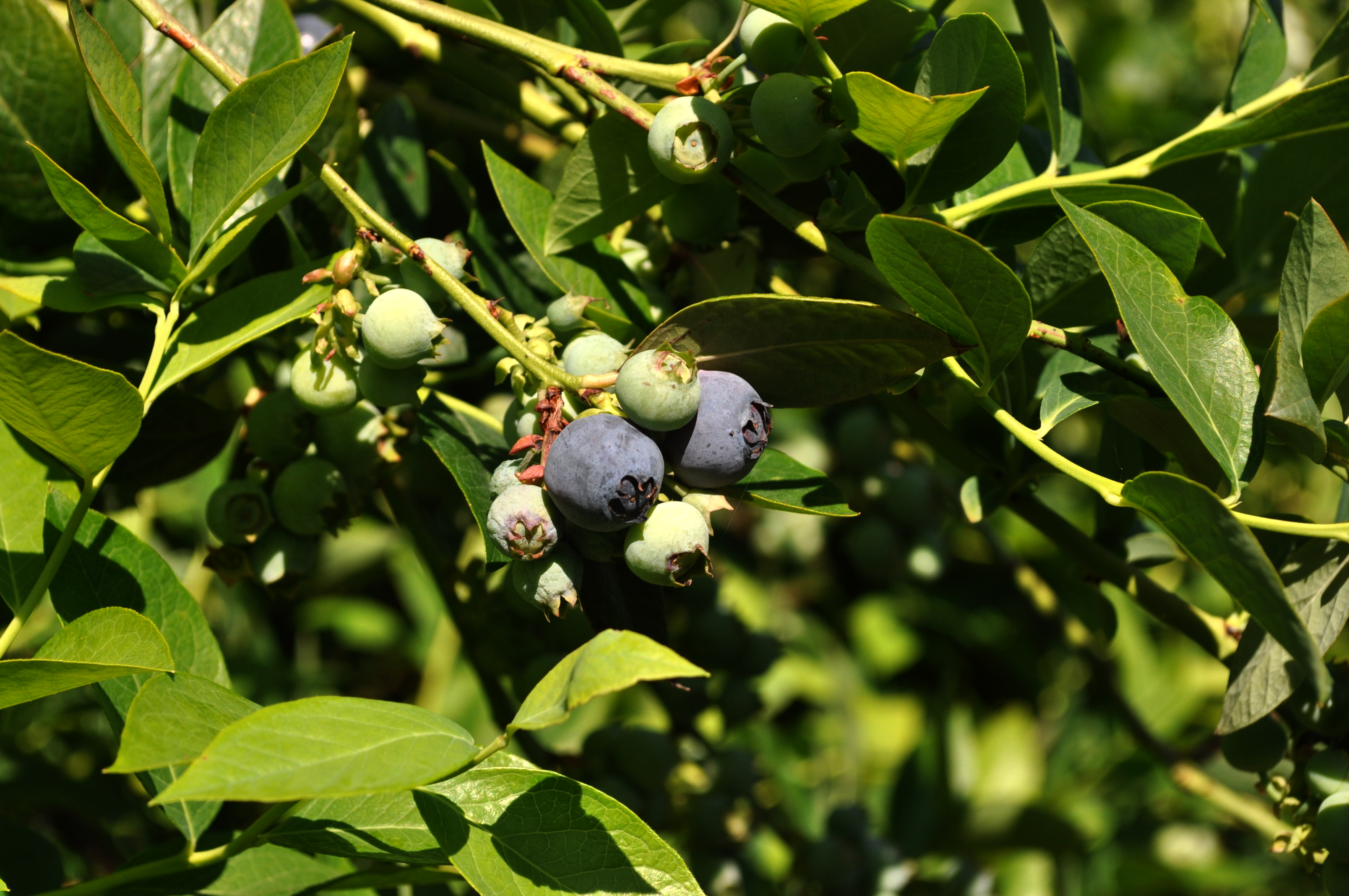Opinion: Blueberries from 2019 to 2020 – the inflection point
By Cort Brazelton, an International Blueberry Organization founder and Co-CEO of Fall Creek Farm & Nursery, Inc.
 2019 will be looked back upon as the year that the global blueberry industry began a new trajectory. 2020 will be the year that the change starts to become the ‘new normal’.
2019 will be looked back upon as the year that the global blueberry industry began a new trajectory. 2020 will be the year that the change starts to become the ‘new normal’.
Last year, developments in the fresh blueberry supply curve began to deliver on a new level of consistency. As a result, the increased consistency and availability of blueberries are commensurately facilitating heightened expectations of the product delivered. Since the blueberry consumption boom began with the unleashing of the health messages in the late ‘90s, the industry’s growth and the opportunities in the business have been fundamentally supply-driven.
Recognizing substantial efforts over the last 20 years by many public and private entities to make a marked improvement in the quality of the product delivered to consumers, the fact is that the majority of the blueberries that consumers buy today do not exceed their desires and expectations.
Simply put, when we look back, the biggest driver of opportunity in the industry has been simple perishable produce fundamentals in supply and demand – having product, and the greatest returns have been realized by having blueberries when there are fewer of them. While the transition away from this reality has been forecast for many years by me and many others, it’s been surprising how long it’s taken for the reality to start setting in. 2019 was the year when it started to be felt. In 2020, the shift from a supply-driven industry to a quality-driven industry will be ever more real.
Why did it take so long to get here?
Market Growth: Part of this ‘prolonged adolescence’ in the supply-to-quality-transition in blueberries is market-driven, and part of the delay is due to genetics and horticulture. On the market side, those of us fortunate enough to be in the industry over recent decades have enjoyed gravity-defying market dynamics. In fact, it was not uncommon for volumes and pricing to increase in tandem, or at least for volume to increase as category value grew faster.
There have certainly been bumps in the fresh and processed blueberry markets since the 2000s. Those of us who’ve been around for a while remember them all too well: various processed market crashes in North America and globally; the lobesia botrana crisis in Chile; and the Spanish supply shock of 2017 are all examples.
But on the whole, blueberry production has continued to grow in most supply windows and in most markets, while market demand has grown at a similar pace and in some cases, faster–particularly in Europe and Asia. Please note, these are generalizations about aggregate trends that ignore many specifics. Compared to other produce items, it has been a pretty steady ride for blueberries.
Supply Side Limitations: On the horticulture and genetics side, while not as much a factor in the processed business, the grossly undersupplied windows of the fresh blueberry market remained comparatively undersupplied as the market continued to grow. This was due to the simple limitation of the horticultural techniques of the time and physiological and genetic limitations of the species. This too has changed.
Over the last 10 years in particular, the advent of new genetics in low and no-chill categories combined with new horticultural techniques and growing systems (e.g., structure growing, substrate, nutrition and pruning techniques, etc.) have changed the game, opening new growing regions, new sources of supply, and new means of production in existing regions which has empowered the accelerated closing of these windows of opportunity.
Even with the growth in regions such as Peru, Mexico, Morocco, and southwestern China, supply in those “shoulder periods” is still markedly lower than the peak supply periods. That said, the availability today in all global markets in September and October, or March and April, is far more dynamic and less scarce than it was even three years ago. It often doesn’t take so long for the supply side to adapt to meet market demands.
So, where is the industry headed now?
Produce industry veterans have seen these dynamics before in many crops, and though we in Blueberry Land love to believe we are special (I certainly believe blueberries are special!), there is a great deal we can learn from the cycles and stories of other high value produce crops. I believe we are still many years away from a year-round fresh supply curve, free of notable peaks and troughs. However, in the coming years, the peaks will eventually look more like hills than mountains, and the troughs will start to look more like ditches than valleys.
While this change will take more than five and less than 10 years, there is another great change afoot. There is a substantial shift underway in consumer (B2C) and final handler and retailer (B2B) expectations vis a vis the quality on offer and the quality demanded. While the dynamics of a supply-driven market will still be felt at times over the next five to 10 years, 2019 marks the year that our industry’s transition from a supply-driven to a quality-driven industry began. 2020 is the first year that we as an industry must own this reality and recognize its inevitability.
This is imperative for the competitiveness, relevance, and credibility of our product and our industry. This change will penetrate the business of every company and associated organization involved in blueberries – it’s time to truly turn the focus to the consumer experience in blueberries.
For anyone who’s read Marshall Goldsmith’s What Got You Here Won’t Get You There, and anyone who hasn’t, this might be a good time to pick it up. Our industry is undergoing a paradigm shift. Business model norms that have worked for years–even decades–will be challenged by this new paradigm. Some will play defense and others will look for ways to reflect, adapt, and play a strong offense.
Recent developments in Chile offer an example of a mature industry. The Chilean industry which–after the U.S.–is the most established and mature blueberry industry in the world, has an industry-wide effort underway to play both offense and defense.
Industry leaders in Chile recognize the challenges of their distance to market and seek to leverage their experience as a growing and export region by pushing a new level of voluntary quality standards. They are striving to enhance and improve the quality delivered by growers through recommended processes, approved and delisted varieties, and many other approaches worth attention.
No one is standing still. New industries in places such as Morocco, Mexico, Peru, and southern Africa are still in the midst of establishment phases and have an opportunity to make appropriate investments in the systems, varieties, infrastructure, and technology not of yesterday, but of tomorrow.
Meanwhile, industry leaders and incumbents in established regions in Europe, Chile, Argentina, and North America are actively renovating and expanding their facilities, replacing old varieties, planting new varieties, investing in new technology in their fields and packhouses with an enhanced focus on the demands of the future.
All these efforts are focused on the same outcome. The opportunity is to give the consumer what they want. Even in the U.S., the largest market in the world, penetration is only slightly over 50%, with a tiny portion of those consumers buying and consuming the majority of the fruit. This is surprising considering the market penetration and level of consumption in a category such as strawberries, which has much higher market penetration and per capita consumption.
There are other crops and other products that would love to take the coveted space that blueberries have earned among their loyal consumers. We as an industry must both protect and respect the loyal consumers we have by continuously investing to deliver the product they want and deserve while also increasing “share of stomach” with consumers who have yet to fall in love with our products and are still waiting for us to give them what they want.
There is no one road to this outcome; there are many. No one company controls the route. However, if we’re in the blueberry business, we’re all in the same truck. At the risk of mixing metaphors, the opportunity to grow the pie is far greater than the opportunity of stealing pieces from others.
I care deeply about the blueberry industry. I’m concerned about some of the challenges we face. I worry about the level of change required for many in the industry to remain competitive and I worry about the speed of establishment and potential “errors at scale” that can be committed in some of the actively growing regions.
But I am also encouraged by the amount of innovation and new ideas moving around the world and within blueberry locales that are resulting in greater efficiencies and ultimately higher quality. I’m excited about the number of new consumers discovering blueberries in the growth markets of Asia and Europe, the remaining room for increased growth in North America, and in general the fact that improvements are being made in product quality that will help increase consumption among existing blueberry consumers as well as creating new blueberry fans.
2019 was a year of substantial change: great for some, challenging for others. One of my New Year’s resolutions in my day-to-day blueberry life is to make 2020 the year of quality and excellence—better quality in everything we do and supporting everyone in blueberries to focus and achieve the same.
On that note, best wishes in 2020, cheers to improved quality, and eat your blueberries!
Cort Brazelton, is an International Blueberry Organization founder and Co-CEO of Fall Creek Farm & Nursery, Inc., an international blueberry breeding and nursery company supplying commercial growers worldwide for more than 40 years.
15/01/2020





